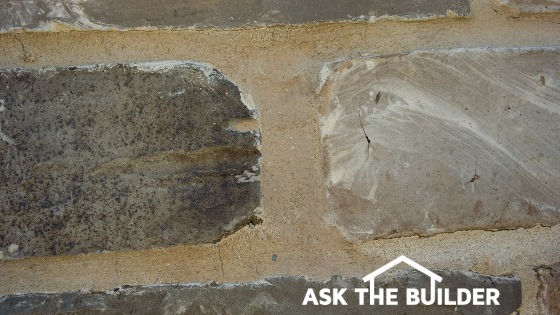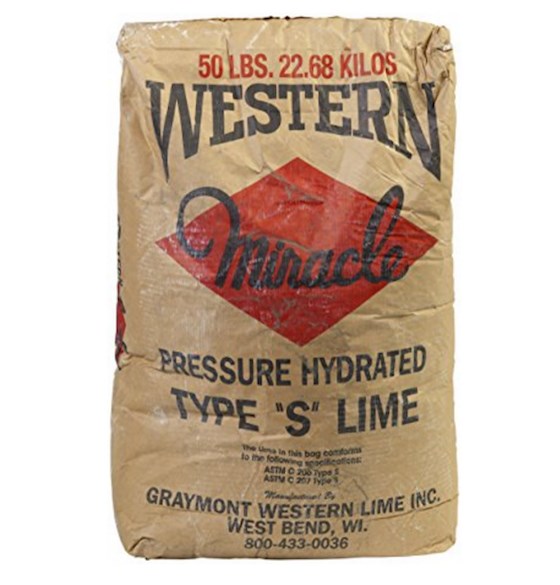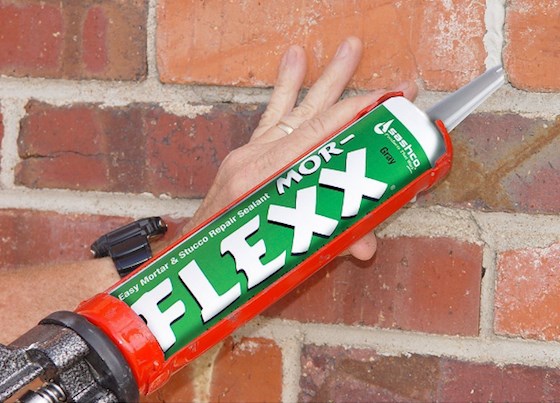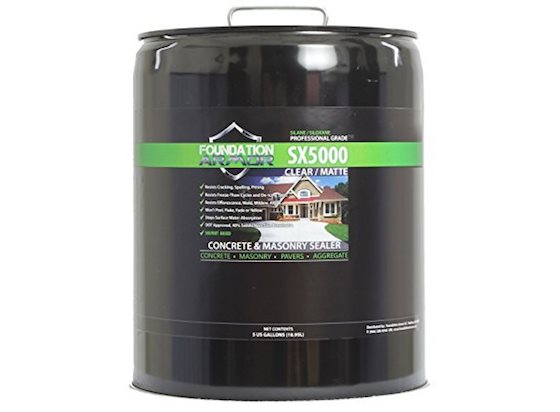How To Repair Mortar With Caulk

The mortar in this brick wall can be repaired with caulk, but realize there will be color issues and it’s not permanent. ©2017 Tim Carter
How To Repair Mortar With Caulk
DEAR TIM: My ten-year-old house developed some cosmetic cracks in the mortar. I got some bids to have tuck-pointing work done and nearly gagged when I looked at the cost.
I’m wondering about using a special caulk I found that’s made to repair mortar joints. It contains fine sand so it’s textured and the color matches my mortar.
I did a test in a small area and am really satisfied with the appearance. It seems too good to be true.
Is this caulk the Holy Grail of mortar repair? What could possibly go wrong? Aaron W., Prosper, TX
DEAR AARON: I’m sorry to hear about this issue with your mortar.
Cracks Since Day One
One wonders if these tiny cracks haven’t been there since the day the house was built, especially if the brick was laid during a blistering hot stretch of weather. Hot, windy weather is the worst time to do any masonry or concrete work as the water leaves the mortar and concrete too fast.
Rain & Wind = Bad JuJu
You should be concerned with the small cracks because wind-driven rain readily enters brick walls. It always has, even old brick buildings constructed decades ago.
Old builders and masons knew about this water infiltration and used different types of brick in solid masonry walls.
Soft Inner Brick
The inner layers of brick hidden by the outer face brick and the interior wall finishes were made with a softer brick that could absorb lots of water. These brick were not fired as long in the kiln and the kiln temperature was not as hot.
You can often recognize these softer brick by their color. They're almost always have a very orange cast and crack with ease.
Back & Forth
The water would enter the brick as the storm lashed the sides of the building with rain. Each raindrop smashed into the brick and mortar and the wind pressure shoved the water into the wall like football players try to shove a fellow team member over the goal line.
As each raindrop crashed into the wall, it pushed the water from the previous raindrop deeper into the brick wall.
This water would then go back outside as soon as the storm was over. The sunshine and breeze would suck the water out of the brick walls faster than a tumbleweed skitters across Texas rangeland in a windstorm.
Long-Lasting Mortar
Before we discuss your magic caulk discovery, let’s talk about the permanence of brick mortar. What would you say if I told you that your bricklayers could have used a mortar that’s been in use for over 4,000 years and is still in great condition?
What would you say if this mortar had the ability to heal itself and repair tiny cracks in some cases? I knew you’d be interested.
If your bricklayers had used hydrated lime mixed with the sand instead of regular mason’s mortar mix, you’d probably not need this caulk you discovered.

This is excellent hydrated lime. It's a fine white powder and it's going to look great on your home. CLICK THE IMAGE TO ORDER SOME RIGHT NOW.
Hydrated lime is a building product that’s rapidly slipping from history to legend to myth, just like the golden ring in J.R.R. Tolkien’s book The Lord of the Rings. I’m doing my best to ensure the wonders of lime mortar continue to live on and on.
Soft vs. Hard
Let’s talk about this caulk. I’ve not used it, but realize that no caulk, no matter what it contains, could ever equal the lifespan of a lime mortar. When you mix hydrated lime with water it transforms back into limestone.

This is the magic caulk that Aaron tested on his home. You can actually SEE this caulk in the photo above of Aaron's brick wall. He lucked out in that the mortar color and caulk color are nearly identical. But for how long? CLICK HERE NOW TO ORDER THIS CAULK IF YOU WANT TO TRY IT.
We all know how long-lasting limestone can be as many of our Federal buildings and monuments are faced with this durable stone. Sand, which is nothing more than tiny pieces of rock, make up the rest of the mortar.
Punishing UV Light
The chemicals used to make the caulk undoubtedly will succumb to the ultraviolet (UV) rays of the sun. It may take a decade or two, but the sun’s UV rays are so powerful they can break atomic bonds of metals.
The sun’s UV rays breaking apart a flexible caulk would be like you trying to tear apart a wet paper towel.
Color Fade
I’d also be concerned about the color fastness of the caulk. It may match your mortar now, but will the color pigments in the caulk be able to withstand the UV rays in two, four or ten years?
If the color does fade, then what do you do then?
One Color
Another issue with the caulk is it produces a monochromatic color. In other words the caulk, once dry, is one color. Fresh mortar has this same one-color appearance when it’s new because the cement or lime paste is coating the tiny pieces of sand in the mortar.
Mortar Multi Mini Color Blend
But Mother Nature wears off this ultra-thin paste from the sand in a few years and then you start to see the individual colors of the grains of sand. If the mortar you don’t coat with the caulk starts to weather more and more, will it soon not match the caulk? There are just so many unknowns.
Come Unglued?
What about long-term adhesion? The chemistry of caulk is that of glue. Caulks are in the glue and adhesive family.
The caulk may work really well now and develop a tenacious bond with the mortar. What kind of mess might you have on your hands five or ten years from now if the bond fails?
Some Great Caulks
In all fairness, I’ve seen some very high-quality commercial-grade caulks used to fill expansion joints on large exterior brick walls. Some still is looking good after a decade. Just realize that mortar that’s installed correctly can last hundreds and hundreds of years with no care.
Water Repellent Cure
There may be another solution to your problem. You may be able to spray onto the brick and mortar a clear water repellent that’s got a very high solids content. It’s possible the liquid may dry and do a great job of repelling most of the water that you’re worried about.

This is a magnificent silane - siloxane water repellent that soaks into concrete. CLICK THIS IMAGE NOW TO ORDER IT.
I can tell you that I’d spend hours and hours researching clear water repellents and doing your due diligence to see what other users have experienced.
It would be infinitely easier to spray on a liquid than to caulk the thousands of feet of mortar joints on your home. Here’s hoping you’re able to locate that magic liquid should it exist!
Column 1185
One Response to How To Repair Mortar With Caulk